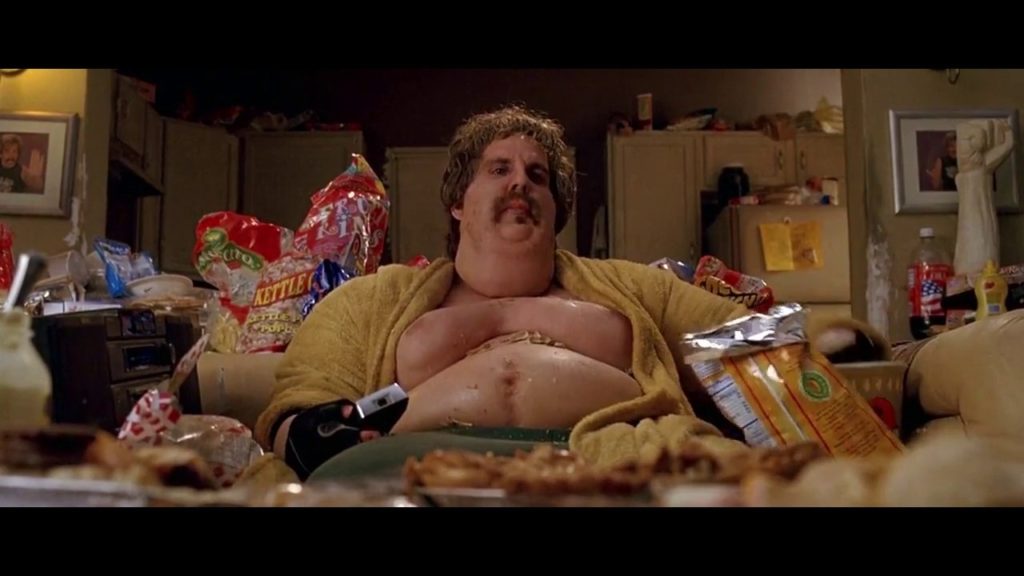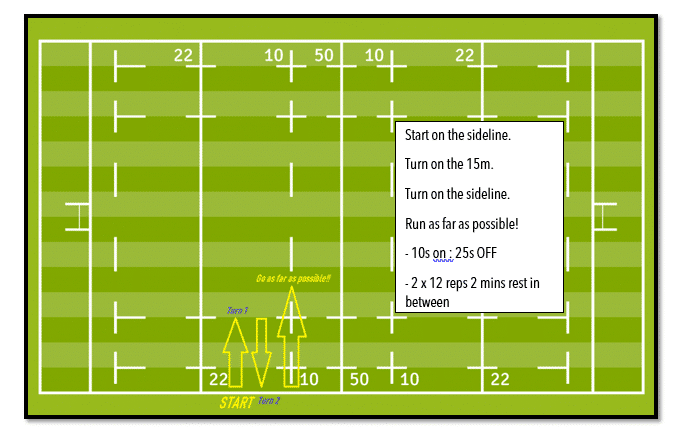11 de July de 2020
Breaking out of Lockdown – A Practical Guide to Getting Back to Your Best
The lockdown imposed due to COVID-19 has affected everyone involved in sport worldwide. It has affected the local club player as much as it has the professional sports star. It is rare you get your local weekend warrior sharing a performance problem with Lebron James or Lionel Messi, yet here we are! The amount this unique situation has affected us varies between individual. But without organized training and access to facilities, sports stars are trying to fight the ease in which they can just sit around watching Netflix or playing Call of Duty all day just like everyone else! They may have access to more equipment but they will still need to get creative to maintain their fitness.
Whether it’s a pro sports star or just someone who likes to train and play sport, we will all be trying to fight off the loss of fitness that the lockdown will undoubtedly have caused. Knowing that we will likely be in a worse physical state when we exit lockdown compared to when we entered it, it can be very easy to beat ourselves up about it. However, if we view lockdown activity on a continuum, it makes it easier to stay focused and not get too down about it. On one end, we have the gold standard where fitness levels are maintained or even enhanced, then on the other end we have a fast food eating slob like White Goodman at the end of Dodgeball, we can start to track where we are at. From there, you can slowly shift yourself along the continuum whilst taking the pressure off yourself, reducing that pre return to play anxiety.
 Ideally we don’t want to go from GloboGym to this like White Goodman did in the film Dodgeball!
Ideally we don’t want to go from GloboGym to this like White Goodman did in the film Dodgeball!
Knowing what our athletic ‘normal’ looks like allows us to plan and prepare for getting back to achieving it. In pro sports teams for example, they will work backwards from the main event (in this case the first block of fixtures post lockdown) and prescribe training to build work load tolerance to try and bridge the gap between lockdown loads & competition loads. This is to allow the players bodies to adapt so they don’t get injured. This process is still applicable to the weekend warrior, just the loads they will be shooting for will be far less if they only train once a week with a game at the weekend.
Many sports are now approaching return to play, although these periods of preparation from lockdown to training to games has been short. Pair this accelerated return to play, alongside dense, congested fixture lists and you can see how this can potentially become a recipe for soft tissue injuries. You only have to look at the Bundesliga injury rates on their return to see this seems to be the case (1). This is why it is imperative to take advantage of any opportunity you have left in lockdown to prepare for when you are returning to play.
You will need to take into account any particular risk sites of injury for your sport, or areas that might get overloaded in a dense training and playing block. For example, in football it will be key for players to get regular exposure to high speed running to protect against running based hamstring injuries. In contact sports like rugby, building back up neck strength and contact loads will be important. Then on an individual level, it will be key to bulletproof areas that have been previously injured because the best predictor of future injury is past injury (2). So if you are a basketballer who has had problems with your groins in the past, it will be essential to keep up some specific groin strengthening work so that this injury risk site is best protected.
For our weekend warrior, doing a small level of activity may be enough – a run in the park, a YouTube exercise class – to help keep them ticking over. However, for higher performing athletes, unfortunately that won’t quite cut it. The top athletes will need bespoke training geared towards their needs and that is why during lockdown many sports teams have used apps like TeamBuildr and CoachMe Plus, to send individualized workouts and session plans to their players. Most smart coaches when designing programs will need to be keenly aware of each individual’s situation and environment because the access to equipment, space and activity level will vary largely in the group. To add to the planning headache, some teams may have players based over multiple countries with different legislation and rules regarding physical activity.
 The use of apps like TeamBuildr have helped coaches worldwide program to their athletes remotely.
The use of apps like TeamBuildr have helped coaches worldwide program to their athletes remotely.
Understanding these problems provides a backdrop for how a coach may want to set out their training to best prepare their athletes for what they will be coming back for. On the most part coaches will be looking at attacking these 4 main areas during the lockdown period:
- Tissue Tolerance
For running based sports, there will be an amount of on feet running load a player will need to pick up prior to returning to train. Their tissues will need to be tolerant of the loads exerted on them, to protect against injury. Or in throwing sports they will need to ensure some volume of pitching or bowling has been done in the lockdown so that the gap between lockdown and practice loads isn’t as large, so loads can be built up more gradually.
- Conditioning
Training injuries are often also related to fatigue, so building up a player’s aerobic base to cope with the intensities of training will be key. Not only will it help protect against injury, but it will allow a player to repeat more high intensity actions and have more involvements.
- Strength
A level of strength underpins so many areas of physical development, whether that be injury prevention, speed, power, robustness, work capacity etc. so trying to maintain these qualities will be a key foundational quality that affects everything else.
- Speed & Power
Speed & power development can be seen as the icing on the cake to the other work that comes before it, but it is still imperative you try to keep this thread in a players program as it will really help improve performance.
We will go through each of these 4 areas in a bit more detail below and provide examples of what that training might look like:
Tissue Tolerance
For the pros who have sport science support they can lean on GPS databases and HR monitors to help guide the training and be a lot more accurate with the training prescriptions. However, for those without access to this technology it is still possible to land roughly in the right place by using a bit of common sense. For example, looking at what a player is usually exposed to, you can replicate similar demands to build up a player’s tissue tolerance. For instance, if you play a 90 minute football game with a 2 hour training session a week, it makes sense to try and accumulate roughly that amount of training. Perhaps split over more days with separate daily areas of focus to meet the demands of the game. You may not have the exact distances or speed bands a professional footballer might have access to but it will get you well prepared for when you return to train.
 An example rough return to play template for a footballer
An example rough return to play template for a footballer
Another thing to think about is that due to lockdown, athletes will likely have had a very restricted movement vocabulary. There will have been a heavy dose of sitting, but not a lot else. Often the sport itself gives a player exposure to all kinds of movements in decent doses – running, jumping, decelerating, twisting, squatting, bending etc. but without games and sport practice taking care of this, it will be key to pick up more work in this area. Their daily lives won’t provide much movement variety or volume, so it would be wise to spend a bit more training time designated solely to movement quality, whether through stretching, mobility or movement primers.
An example of two quick movement primers that players could implement at home and do prior to each session that requires no equipment.
Conditioning
This is the fitness work that will enable the player to repeat the high intensity actions of the game. You can achieve on multiple strands of your training if you link up your conditioning workouts with your on-feet tissue tolerance sessions at the same time. By using apps such as Interval Timer you can be very specific with timings and reps. Pairing this with phone GPS tracking apps like Strava can give a rough idea of training volumes and speeds for those without access to GPS systems.
Some athletes may have been ‘lucky’ enough to have been given fitness equipment for them to take away during lockdown or will have access to these at their homes. This gives them the option to access off feet modalities to improve cardiovascular fitness too. Things like Watt Bikes, assault bikes and rowing machines are great for improving these.
From there you can bias your training to the specific fitness quality you want to be trained. At times, you may want to work on ‘central’ fitness that focuses more on the heart fitness. These sessions have longer intervals with smaller rest times to keep the stress on the heart high. An example session might be 60s on: 20s off for x20 reps over a 30m course or on a piece of exercise equipment.
Other times you may want to work more on ‘peripheral’ fitness that focuses more on muscle fitness. These sessions look to overload the task specific musculature used in sport specific actions. For sports like football this might be heavily running based. But in collision sports like rugby it may involve more work getting off the floor (down ups) or collision/contact based work (wrestling/grappling/bag hits etc.). An example might be 2 x 12 reps of 10s on : 25s off over a short shuttle distance of 15m looking to accelerate and decelerate fast. A down up could be added into some of the reps also to replicate the game more as well.
 An example conditioning drill looking to stress the repeat acceleration demands of rugby
An example conditioning drill looking to stress the repeat acceleration demands of rugby
Strength
Strength underpins so many sporting actions but unfortunately due to the lack of facilities it is likely to be the one area most affected by lockdown. Strength is built by lifting heavy loads so despite some athletes getting some equipment to take home, they will likely have to get a lot more creative with their training if they don’t have a full home gym set up.
For weaker athletes, using body weight exercises like press ups, chin ups, squats & lunges are all good exercises to be doing. These body weight exercises may provide enough of a stimulus for adaptation to get by. Unfortunately, for athletes who are already pretty strong, they will need to get a lot more creative to find ways of overloading themselves. Some of the strategies could be: using single leg exercises to overload one leg, so only small amounts of external load are needed. Using backpacks filled with heavy items found around the house to overload exercises like chin ups or press ups. Using manual resistance to create maximal loads (although you will need to convince a family member to help you out though!). Or maximal isometrics performed with a towel to fire up the nervous system to generate strength adaptations. A few of these strategies can be seen here:
An array of home based exercises that can be adapted to fit the equipment (or lack thereof!) at your disposal
Speed & Power
Specific speed and power work is probably the lowest down the list of priorities because getting back to fitness and ensuring the body has a training foundation first will be more important than performance improvements. But at the same time speed & power training cannot be neglected. These qualities are the ones that precede goals being scored via a lightening quick counter attacks in football, or tries being scored because of a big carry and line break in rugby (3).
This training aims to transfer some of the heavy strength work out onto the field. It doesn’t necessarily have to be complicated and can involve things as simple as jumping and sprinting as long as they are performed with maximal intent. Speed and power is plane and vector specific so matching up your training to the demands of your sport will be key here. So if you are involved a lot in rotation like in sports like golf and baseball, it makes sense to include rotational power work like med ball throws in the training. For vertical based sports like basketball, you might want to spend more of your time doing things like box jumps or depth jumps.
To maximize the adaptation to this work all these drills need to be performed with maximal intent. So you need to ensure you are fresh to perform each set. So be careful of rushing these sessions and turning them into conditioning sessions.
Closing Thoughts
COVID-19 has provided challenges to everyone working in sport but hopefully soon we will be returning towards more normality in training and eventually, competition. In preparation for this transition out of lockdown it is going to be incredibly important to be smart and focused with our training to avoid injury, so that players can hit the ground running. It will be interesting to see which teams and players will be able to convey this difficult time into a performance advantage because they trained appropriately and smartly in the lockdown. Those who are smart with their training will be in the best position to hit the ground running when lockdown is over and normal training & competition resumes.
References
- https://www.trackademicblog.com/blog/thesnapshotbecomesastory
- Fulton J, Wright K, Zebrosky B, et al. Injury risk is altered by previous injury: a systematic review of the literature and presentation of causative neuromuscular factors. Int J Sports Phys Ther 2014;9:583–95
- Faude O, Koch T, Meyer T. Straight sprinting is the most frequent action in goal situations in professional football. J Sports Sci 2012; 30: 625-31

